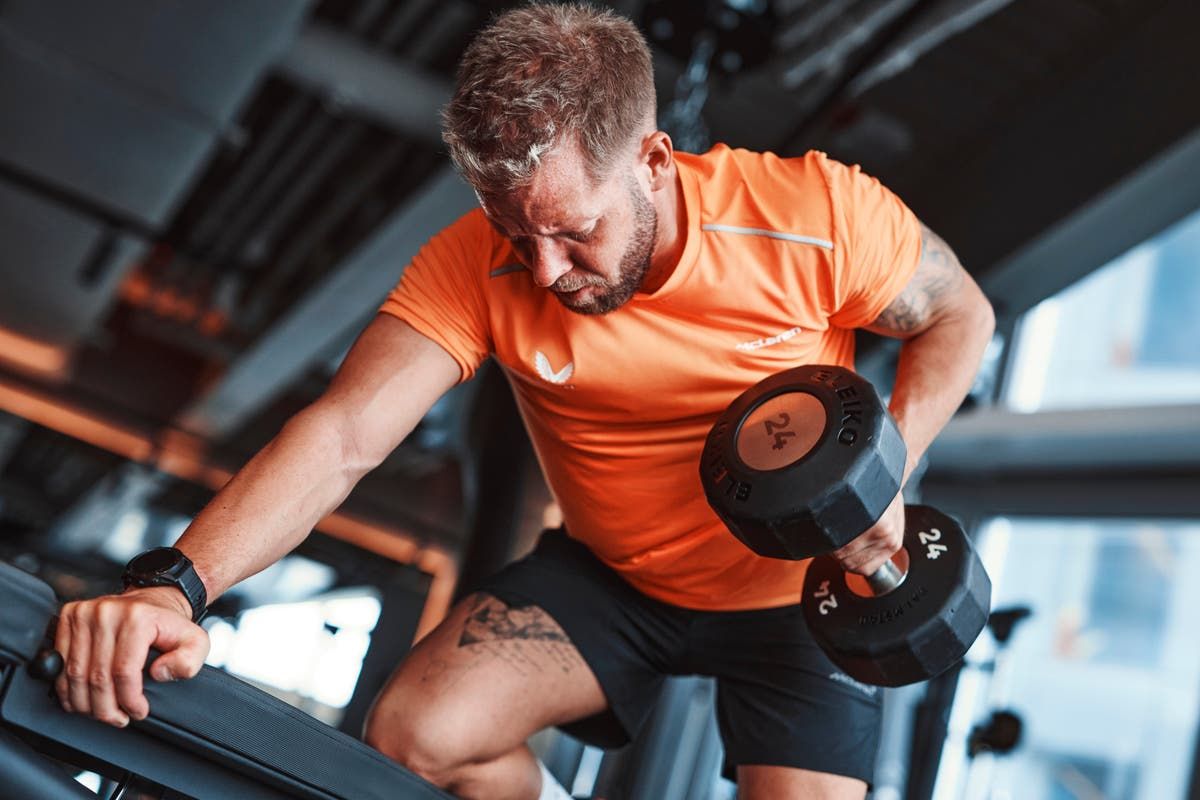Truly support
independent journalism
Our mission is to provide unbiased, fact-based reporting that holds the powerful to account and exposes the truth.
Whether it's $5 or $50, every contribution counts.
Support us in offering journalism without agenda.
Yo“I’ve asked them to turn up the heat because it can get up to 60 degrees in the cockpit,” Formula E driver Sam Bird tells a group of eager, gaping people in sportswear. I’m one of them, and I’m already sweating profusely. It’s 9am on a Monday morning and I’m about to learn how to train like Bird. As a Formula E driver, he’s legitimately one of the fittest people on the planet.
You wouldn’t think that driving a car around a race track over and over again would require so much physical endurance. At least, I didn’t. “They’re drivers, how tough can their training regimes be?” I texted a friend as I headed to the luxury BXR gym, which was hosting the session. “They’re literally sitting down.” Turns out they’re actually doing a lot more than that.
“Formula E drivers have to maintain a high level of strength and conditioning to be successful at the top level,” says BXR director Alex Nicholl, who co-created Formula E training with Bird. “As current Formula E race cars do not have power steering, strength is a must. On top of this, the length of the race, the high temperatures they experience in the car and the concentration required are all critical to a high level of conditioning.” While in the car, a driver’s heart rate can shoot up to 200 beats per minute – a normal resting heart rate for adults is between 60 and 100 beats per minute. “If their conditioning is not up to par, drivers risk early onset fatigue and impacting their concentration and overall performance on track,” adds Nicholl.
Add to that the fact that Formula E races last 45 minutes and the cars often reach top speeds of up to 320km/h, and it’s no wonder the drivers have to be so fit. Because of the nature of the position you’re in – sitting in a car that’s fairly low to the ground – there are specific muscles that need to be particularly strong too. “General strength is important, but you need to focus on strength in your neck, core and arms,” says Nicholl. The workout we’re going to do is specifically designed to target these areas.
Formula E’s Attack Mode workout is a unique, high-intensity routine that includes assault bikes, TRX (full-body resistance training), free weights and sprints. “As upper body, neck strength and cardio are key parts of a racing driver’s training, the workout hones these skills with exercises such as TRX rows and band sprints,” adds Nicholl.
The idea is that the training will give you an insight into the physical strength and endurance, as well as the mental resilience and agility required to be a Formula E driver. After a brief pep talk, Bird and BXR performance coach Lewis Prosser explain the nature of the training and split us into small groups, with the idea being that we perform the exercises on a circuit.
To get the most out of Formula E, you should also take a look at your diet – unfortunately, rosé is not on the menu.
We do the same exercise three times for 45 seconds before moving on to the next. I’m paired with two intimidatingly strong men, who seem to do this sort of thing all the time. Luckily, there are a variety of weights available; I opt for the lightest ones for each movement. Before we begin, I politely warn my new muscled friends that I’m a little tired and hungover and may not be at my best. They laugh and wish me luck. That doesn’t make me feel any better.
The first few exercises are fairly straightforward: push-ups, kettlebell swings and lunge jumps. Most involve the use of weights in one form or another. After the first few rounds, my abs and shoulders are already starting to ache. There’s not much recovery time between exercises – “this is to help the body adapt to these high heart rates,” Nicholl explains – which means I spend a lot of time panting and clutching my chest, wondering whether the second bottle of rosé I shared with friends the night before was really necessary.
After completing a full round of exercises, we move on to a second set. This time, it's even harder, with sprints, ski trainers, and squats. Halfway through, everything hurts. And when it's finally over, I and several others are on the ground, drenched in sweat and wondering how on earth Bird does this on a near-daily basis.
This BXR-specific workout is only available until July 14 at the chain's luxury gyms in London. But those who want to train like a Formula E driver at home can do so just as easily. The key, says Nicholl, is to plan strategically.
“Don’t make your workout unrealistic,” she says. “Planning to do something much harder than you’ve done before will likely make you lose interest or tire out quickly. Think about doing a workout that will get you away from watching TV for a little while, but also keep you interested enough to want to do it again.”
If you’re short on time, there are plenty of things you can do to give your body a quick burst of Formula E-style agony. “Most people have a kettle, which takes about 90 seconds (two minutes) to boil before you can get your cup of tea. That’s about how long you can do 20/40 air squats in. And, if you do it a few times a day, you could work your way up to 100 air squats a day with minimal effort and time.”

You don’t need to start picking up wine bottles to use as weights, either. “Push-ups, burpees, stair climbs and bear crawls are some of the most effective exercises for toning and strengthening your muscles,” says Nicholl. “And if you have a wooden or tiled floor, all you need is a towel to get an effective core workout. Start in a plank position, put the towel under your hands or feet and slide them towards your chest and then back. You’ll really feel the burn with this exercise.”
However, to get the most out of Formula E, you also need to look at your diet – rosé wine is unfortunately not on the menu. “Before training, choose high-fibre carbohydrates, so they release their energy slowly, and lean proteins to help build muscle,” advises Nicholl. “For example, if you’re working out at lunchtime, have a breakfast of porridge made with low-fat milk and some fruit, or an egg on wholemeal toast. Or you could have chicken and rice for lunch if you’re working out in the early afternoon.”
I honestly wish I had known all this before I walked into the gym that Monday morning. Next time I hope to be a little better prepared.
BXR Formula E testing will take place from July 8-14. Find more details here












